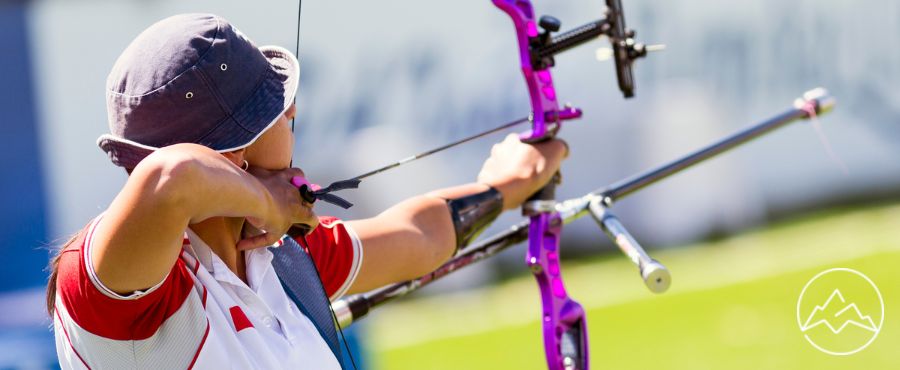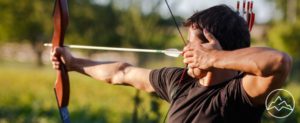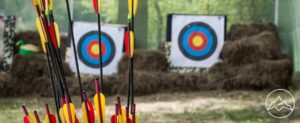Archery tournaments require a combination of skill, strategy, and community support to achieve mastery. According to a recent study, 85% of archers who participate in tournaments are part of a supportive archery community. In order to excel in these competitions, it is essential to understand the different types of tournaments, including field archery, indoor archery, and 3D archery, each presenting its own unique challenges. Preparation is key, and this article will provide strategies to help archers navigate the tournament environment. This includes familiarizing oneself with tournament rules, understanding personal archery style and classifications, and practicing specific tournament situations. Additionally, being prepared for unexpected situations, such as having backup equipment and arriving early, is crucial. Emotions must be controlled and focus maintained throughout the tournament. Furthermore, being part of the archery community provides exclusive content and value, enhancing the overall tournament experience. This article will delve into the tips, tricks, and benefits of community involvement to help archers master the art of archery tournaments.
Key Takeaways
- Types of archery tournaments: field archery, indoor archery, 3D archery
- Preparation for tournaments: mindset, planning ahead
- Familiarizing with tournament rules: scoring, arrows per round, special rules
- Importance of fun and enjoyment in archery competitions
Types of Tournaments
The pre-existing knowledge includes an understanding of the different types of archery tournaments, such as field archery, indoor archery, and 3D archery. Field archery tournaments take place outdoors and involve shooting at targets set at various distances and angles. Indoor archery tournaments, on the other hand, are held in covered structures and feature fixed distances for shooting. Lastly, 3D archery tournaments simulate hunting scenarios by using life-sized animal targets in natural environments.
In terms of scoring, each type of tournament may have different scoring systems. Equipment requirements also vary depending on the type of tournament. For field archery, participants may need to have equipment suitable for shooting outdoors, including bows, arrows, and protective gear. Indoor archery tournaments may have specific regulations on the type of bows and arrows allowed. 3D archery tournaments may require participants to have equipment suitable for shooting at 3D targets.
Overall, having knowledge of the different types of archery tournaments and their scoring systems and equipment requirements is crucial for preparing and participating in these competitions.
Preparation Strategies
One effective strategy for preparing for archery tournaments involves developing a comprehensive plan that includes mental preparation, familiarization with tournament rules, and practicing specific tournament situations to build muscle memory and endurance. In terms of mindset techniques, archers can employ visualization exercises to mentally rehearse the tournament scenarios, focusing on positive outcomes and maintaining a confident attitude. Additionally, relaxation techniques such as deep breathing and meditation can help calm nerves and enhance concentration during the tournament. To build muscle memory, archers should practice repetitive shooting drills that simulate tournament situations, such as shooting at various distances and angles. This helps to develop consistency and accuracy in form and technique. It is crucial to practice regularly and gradually increase the intensity and duration of training sessions to improve endurance and stamina. By incorporating these preparation strategies, archers can enhance their performance and increase their chances of success in archery tournaments.
Benefits of Community
Participating in the archery community offers numerous advantages, including access to exclusive content and valuable resources. The benefits of joining a community go beyond the physical act of shooting arrows. Archery communities provide a sense of support, where individuals can share their experiences, seek advice, and receive encouragement from like-minded individuals. Through networking opportunities, archers can connect with others who share their passion, potentially leading to new friendships and even mentorship opportunities. Being part of a community also allows archers to stay updated on the latest news, equipment advancements, and training techniques. Additionally, the archery community fosters a sense of camaraderie and sportsmanship, creating a supportive and inclusive environment for all participants. Whether it’s through online forums, local clubs, or national organizations, the archery community offers a wealth of resources and connections to enhance an archer’s overall tournament experience.
Frequently Asked Questions
What is the minimum age requirement to participate in archery tournaments?
The minimum age requirement for youth participation in archery tournaments varies depending on the specific tournament and governing bodies. While some tournaments may have a minimum age of 8 years old, others may require participants to be at least 12 or 14 years old. It is crucial for young archers to adhere to age restrictions to ensure their safety and promote fair competition. Potential participants should consult the tournament rules and regulations to determine the minimum age requirement for their desired competition.
Are there any restrictions on the types of bows and arrows that can be used in tournaments?
In archery tournaments, the types of bows and arrows allowed may vary depending on the specific rules and regulations of the event. Generally, the most commonly used bows include recurve bows, compound bows, and traditional longbows. Each type has its own advantages and disadvantages, and archers typically choose the bow that suits their personal preference and style. Similarly, there may be restrictions on the type of arrows that can be used, such as limitations on arrow weight and length. These restrictions ensure fair competition and safety during the tournament.
How are archery tournaments scored?
Archery tournaments are scored using various methods and ranking systems. Scoring methods often involve assigning points based on the accuracy and proximity of the arrows to the target’s center. In some tournaments, a bullseye may be worth more points than outer rings. Additionally, distance and target size can also affect scoring. Ranking systems are used to determine the final standings, taking into account the scores achieved by each participant. These scoring and ranking systems ensure fairness and competitiveness in archery tournaments.
Are there any specific attire or dress code requirements for participants in archery tournaments?
Archery tournament dress codes vary depending on the type of tournament and its specific rules. Generally, participants are expected to dress in comfortable and appropriate attire that allows for a full range of motion. This may include athletic clothing, such as t-shirts, pants, or shorts. Some tournaments may have specific requirements, such as wearing closed-toe shoes or a certain color of clothing. It is important to check the tournament guidelines beforehand. Additionally, the community plays a vital role in archery tournaments by providing support, camaraderie, and valuable resources to enhance the overall experience for participants.
Are there any specific certifications or qualifications needed to become a tournament archery judge or official?
Certifications and qualifications are necessary to become a tournament archery judge or official. These may vary depending on the specific organization or governing body. Training is typically required to learn the rules and regulations of archery tournaments, as well as the proper scoring system. Age requirements may also be in place, ensuring that judges are mature and responsible. Additionally, there may be equipment restrictions and dress code requirements for judges to maintain a professional appearance. Community involvement and adherence to tournament etiquette are also important aspects of being a tournament archery judge or official.
Conclusion
In conclusion, mastering the art of archery tournaments requires a combination of skill, preparation, and community support. By understanding the different types of tournaments and their challenges, archers can tailor their training and strategies accordingly. Preparation strategies such as familiarizing oneself with rules, practicing specific tournament situations, and being prepared for the unexpected can greatly improve performance. Being part of the archery community provides exclusive content and value, enhancing the overall tournament experience. By combining these tips, tricks, and community support, archers can strive for excellence in the thrilling world of archery tournaments.












